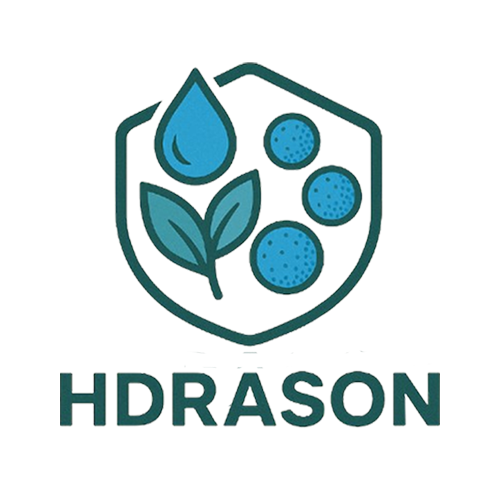
Everything You Need to Know About Water Beads
Share
Introduction
(I) The Rise of Water Beads
Water beads—those tiny, colorful spheres that transform into squishy, gel-like orbs when hydrated—have exploded in popularity in recent years. What started as a novelty item has evolved into a versatile product with endless uses, from kids’ toys and decorative accents to gardening aids and sensory play tools. Whether you’ve seen them in craft stores, used them in a gel blaster, or stumbled upon them in a floral arrangement, you might be curious about their origins, how they work, and all the ways you can incorporate them into your life. Despite their widespread use, many people only scratch the surface of what water beads can do—and what you need to know to use them safely and effectively.
(II) What This Guide Covers
In this comprehensive guide, we’ll dive deep into everything you need to know about water beads. We’ll start with the basics: what they are, how they’re made, and the science behind their expansion. Then, we’ll explore the different types of water beads available, from standard craft beads to specialized gel blaster ammo and glow-in-the-dark varieties. We’ll also cover practical topics like how to hydrate, store, and dispose of water beads, plus essential safety guidelines for kids and pets. Finally, we’ll share creative and practical uses for water beads that go beyond play—proving they’re more than just a fun novelty.
What Are Water Beads, Exactly?
(I) The Science Behind Water Beads
Water beads, also known as gel beads, hydrogel beads, or Orbeez (a popular brand name), are made of superabsorbent polymer (SAP) materials—typically sodium polyacrylate. These polymers are cross-linked, meaning their molecular chains are connected in a network that can absorb and retain huge amounts of water. When dry, water beads are tiny, hard spheres (usually 2-4mm in diameter). When soaked in water, they can expand up to 100 times their original size, transforming into soft, squishy orbs that range from 7-15mm depending on the type and soaking time. The polymers hold water through osmosis, trapping moisture within their structure to create the gel-like texture we know.
(II) History and Origins
Superabsorbent polymers were first developed in the 1960s by the U.S. Department of Agriculture for use in agriculture—specifically to improve soil water retention in arid regions. It wasn’t until the 1990s that these polymers were adapted into consumer products, starting with disposable diapers (which use SAP to absorb moisture). Water beads as we know them today emerged in the early 2000s as a craft and toy item, gaining popularity for their unique texture and visual appeal. Over time, manufacturers began creating specialized versions for different uses, like gel blasters, sensory therapy, and home decor.
The Different Types of Water Beads
Not all water beads are created equal. Different types are designed for specific purposes, varying in size, texture, durability, and features. Here are the most common varieties:
-
Standard Craft Water Beads: The most common type, used for crafts, decor, and sensory play. They come in a wide range of colors (clear, pastels, neons) and expand to 7-10mm when hydrated. They’re soft and slightly fragile, making them ideal for decorative arrangements or kids’ sensory bins but not for high-impact uses like gel blasters.
-
Gel Blaster Ammo Beads: Specialized for use in gel blasters, these beads are made of more durable SAP materials that can withstand firing without breaking mid-flight. They’re typically 7-8mm when fully hydrated, with a uniform size and firm texture to prevent jamming in blasters. Some are treated with additives to improve accuracy and range.
-
Glow-in-the-Dark Water Beads: Infused with non-toxic fluorescent pigments, these beads absorb light (natural or artificial) and emit a soft glow in the dark. They’re popular for night-time sensory play, party decor, and gel blaster battles. The glow duration varies by brand, but most last 4-6 hours after charging.
-
Biodegradable Water Beads: Designed for eco-conscious users, these beads break down naturally in soil or water over time. They’re made from plant-based polymers instead of synthetic SAP, making them safe for gardening and outdoor use without harming the environment. They’re a great choice for floral arrangements or garden moisture retention.
-
Giant Water Beads: Also called "jumbo" or "XL" water beads, these expand to 15-20mm—about the size of a marble or small bouncy ball. They’re used for decorative centerpieces, large sensory bins, and even as stress balls. Their larger size makes them less of a choking hazard for young kids (though supervision is still recommended).
How to Hydrate, Store, and Dispose of Water Beads
(I) Step-by-Step Hydration Guide
Hydrating water beads correctly ensures they expand evenly and reach their optimal texture. Follow these steps:
-
Choose the Right Container: Use a large, clean bowl or bucket. Avoid narrow containers, as beads need space to expand without clumping.
-
Add Water: Use filtered or distilled water for best results—tap water with high chlorine can affect expansion. The ratio is typically 1 teaspoon of dry beads per 1 cup of water, but check the package instructions (giant beads may need more water).
-
Soak the Beads: Pour dry beads into the water and stir gently to ensure all beads are submerged. Let them soak for 4-6 hours (standard beads) or 8-12 hours (giant beads). Avoid over-soaking, as this can make them mushy and prone to breaking.
-
Drain Excess Water: Once fully expanded, use a slotted spoon or strainer to drain off excess water. Gently shake to remove moisture—don’t squeeze the beads, as this can damage them.
(II) Proper Storage Techniques
Stored correctly, hydrated water beads can last for days to weeks. Here’s how to keep them fresh:
-
Short-Term Storage (1-3 Days): Place hydrated beads in a sealed plastic container with a small amount of water (just enough to keep them moist, not submerged). Store in a cool, dark place—direct sunlight will dry them out.
-
Long-Term Storage (Up to 2 Weeks): Drain beads completely, then pat them dry with a paper towel. Place them in a sealed bag with a damp paper towel (replace the towel every 3-4 days to maintain moisture). For craft beads, you can also let them dry out completely and rehydrate later—they’ll shrink back to their original size and expand again when soaked.
(III) Eco-Friendly Disposal
Disposing of water beads properly prevents environmental harm. Here’s what to do:
-
Biodegradable Beads: Bury them in your garden—they’ll break down over 2-4 weeks and release moisture into the soil, acting as a natural water retainer.
-
Synthetic Beads: Do NOT flush them down the toilet or sink (they can clog pipes). Let them dry out completely, then throw them in the regular trash. Some communities accept dried SAP beads in recycling bins, but check your local guidelines first.
-
Avoid Littering: Never leave hydrated or dry beads outdoors—they can be mistaken for candy by kids or pets, and hydrated beads can create slippery hazards.
Essential Safety Guidelines for Water Beads
While water beads are generally safe, they pose specific risks—especially to young children and pets. Follow these safety tips:
-
Choking Hazard Warning: Dry water beads are small enough to be swallowed by kids under 3 and pets. Always keep dry beads out of reach of young children and animals. If swallowed, do not induce vomiting (beads can expand in the throat)—call emergency services immediately.
-
Supervise Kids During Play: Even with older kids (3-8), supervise sensory play with water beads. Teach them not to put beads in their mouth, nose, or ears.
-
Non-Toxic but Not Edible: Most water beads are non-toxic, but they’re not meant to be eaten. Ingesting large amounts can cause stomach discomfort or blockages.
-
Allergy Precautions: Rarely, some people may be allergic to SAP materials. If skin irritation occurs, stop using the beads and wash the affected area with soap and water.
-
Gel Blaster Safety: When using beads as gel blaster ammo, wear impact-resistant goggles to protect your eyes. Never fire at faces, animals, or non-participants.
Creative and Practical Uses for Water Beads
Water beads aren’t just for play—they have a wide range of creative and practical applications. Here are some ideas:
(I) Sensory Play for Kids
Water beads are perfect for sensory bins—their squishy texture and bright colors stimulate touch and sight. Add them to a bin with toys, scoops, and measuring cups for hours of imaginative play. For a calming activity, freeze hydrated beads into ice cubes—kids will love squishing the melting beads.
(II) Home Decor
Use hydrated water beads as a base for floral arrangements—they hold flowers in place and keep them hydrated for longer. Mix different colored beads in a clear vase for a vibrant centerpiece, or use glow-in-the-dark beads in glass jars for unique night-time decor.
(III) Gardening and Plant Care
Mix biodegradable water beads into potted plant soil—they absorb excess water and release it slowly, reducing the need for frequent watering. They’re especially useful for succulents, herbs, and plants that are prone to overwatering.
(IV) Stress Relief and Fidget Toys
Fill a small mesh bag with hydrated water beads to make a stress ball—squeezing it provides a satisfying sensory experience. Giant water beads also work well as fidget tools for kids and adults with anxiety or ADHD.
(V) Party and Event Ideas
Use water beads in party favors, or add them to a kiddie pool for a unique "water bead splash" activity. For Halloween or glow parties, use glow-in-the-dark beads in punch bowls (just make sure guests know they’re not edible!) or as table decorations.
Common Myths and Misconceptions About Water Beads
There are many myths surrounding water beads—let’s debunk the most common ones:
-
Myth: Water beads are toxic and dangerous. Fact: Most water beads are made of non-toxic SAP, but dry beads pose a choking hazard. Always follow safety guidelines.
-
Myth: Water beads never break down. Fact: Synthetic beads take time to degrade, but biodegradable options break down naturally in soil. Dried synthetic beads can be disposed of in the trash.
-
Myth: You can reuse water beads forever. Fact: Hydrated beads will eventually dry out or become moldy. Most can be rehydrated 2-3 times before losing their texture and absorbency.
-
Myth: All water beads work in gel blasters. Fact: Only specialized gel blaster ammo beads are durable enough for firing. Craft beads will break in the blaster, causing jams.
Conclusion
(I) Recap of Key Information
Water beads are versatile, fun, and functional—from sensory play and decor to gardening and gel blasters. Understanding their composition, types, and proper use is key to getting the most out of them while staying safe. Remember: hydrate them correctly, store them properly, dispose of them eco-consciously, and always supervise young kids and pets around dry beads.
(II) Explore and Enjoy Water Beads
Whether you’re a parent looking for sensory activities, a crafter searching for unique decor, or a gel blaster enthusiast needing ammo, water beads have something to offer. Don’t be afraid to get creative—experiment with different colors, sizes, and uses to discover what works for you. With the knowledge from this guide, you can enjoy all the benefits of water beads safely and confidently. So go ahead—soak some beads, get creative, and have fun!
